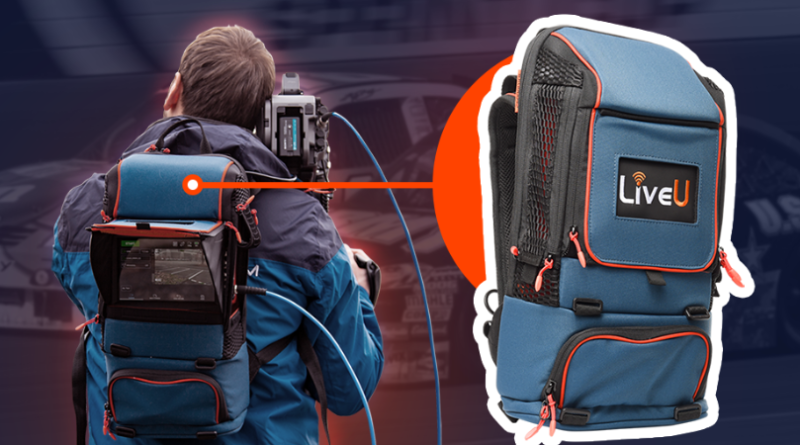LiveU Backpack, nice to have?
LiveU and the IRL Streaming Backpack: Pioneering Live Video Anywhere
LiveU Backpack, ultimate IRL Streaming? LiveU is a leading provider of live video streaming solutions, best known for its innovative portable broadcast technology often referred to as the „IRL streaming backpack.“ Founded in the mid-2000s, LiveU set out with a mission to enable high-quality live broadcasts from anywhere in the world. By replacing the need for traditional satellite trucks and fixed infrastructure with a lightweight, wireless system, the company has revolutionized how live content is captured and shared. Today, LiveU’s technology powers everything from breaking news coverage to real-time social media streams, reflecting its broad impact on the live video landscape.
Inhalt
Company Background and Mission
LiveU was founded in 2006 with the vision of making live video transmission mobile and reliable. Originally established by a team of entrepreneurs in Israel (with global headquarters now in the U.S.), the company identified a crucial need in the broadcasting industry: broadcasters wanted to go live from the field without the cumbersome expense and setup of satellite uplinks. LiveU’s mission became to democratize live broadcasting – enabling anyone from major TV networks to independent content creators to transmit live video from virtually any location. Over the years, LiveU has grown into an international company with offices worldwide, while staying true to its core mission of delivering “live video anywhere”.
From the beginning, LiveU focused on developing a solution that would allow mission-critical live coverage in a portable form factor. This led to the creation of their flagship product: a battery-powered video encoder that could fit in a backpack and use multiple cellular networks for connectivity. The successful deployment of early LiveU units in news and sports broadcasting proved the concept and established the company’s reputation. LiveU’s technology has since been used in high-profile events and breaking news scenarios around the globe, reinforcing the company’s role as a trusted partner for live broadcasting. The company’s ethos emphasizes innovation, reliability, and customer support – a combination that has earned it recognition as a pioneer in live streaming technology.
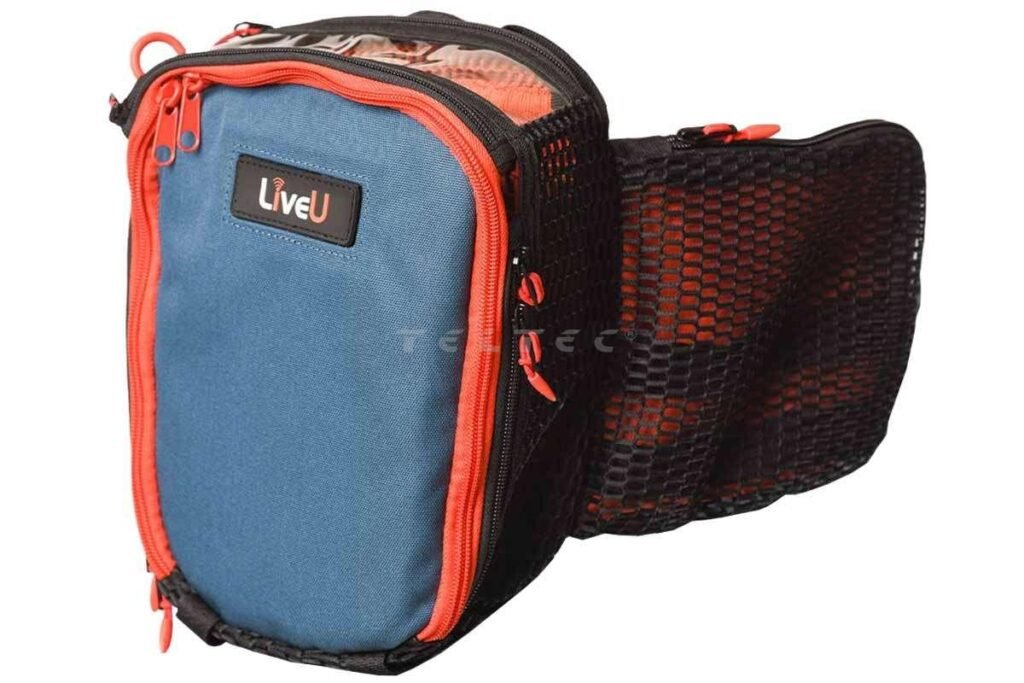
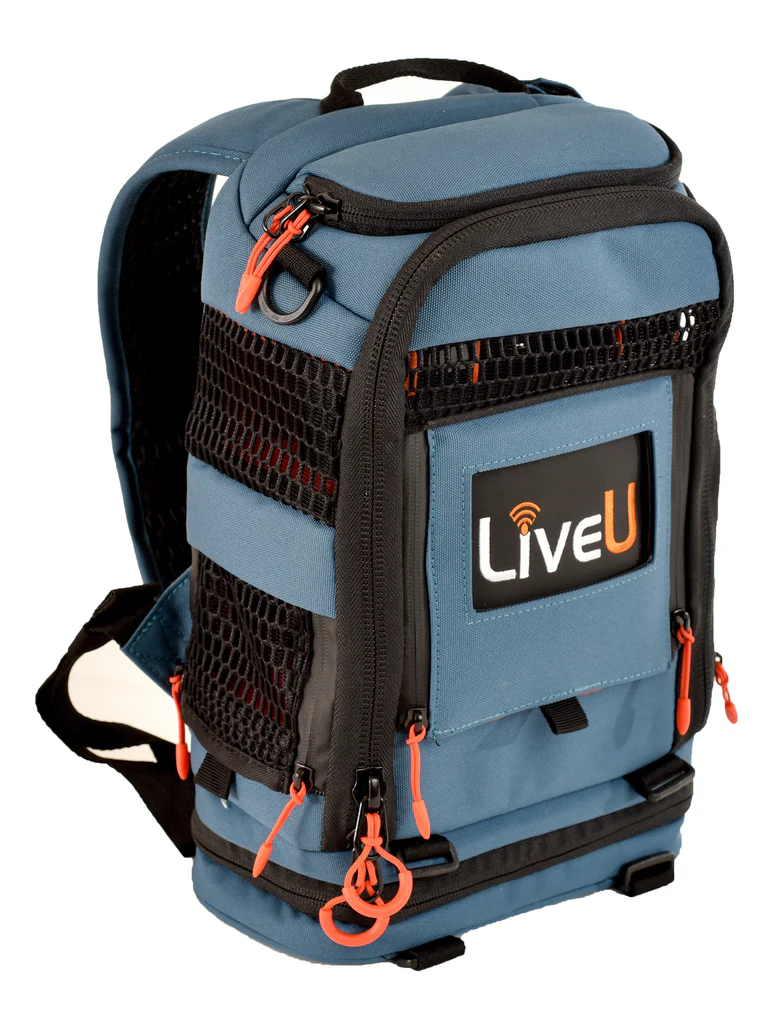
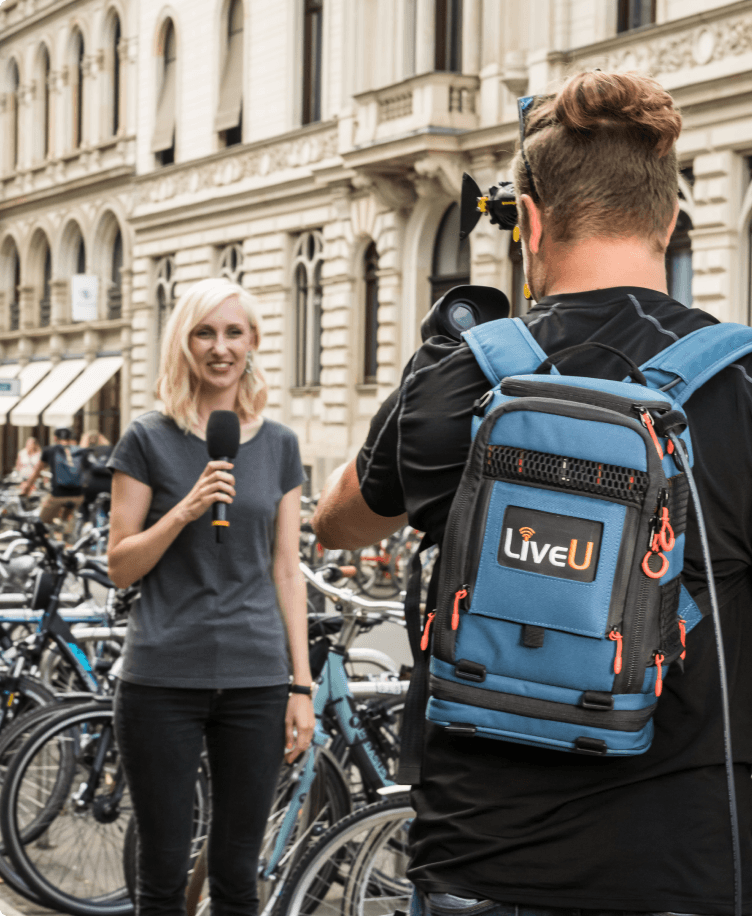
Technological Innovations
At the heart of LiveU’s success is its bonded cellular connectivity technology – a groundbreaking innovation when introduced. Bonded connectivity means that the LiveU device can combine multiple network connections (for example, several 4G/LTE or 5G cellular links, and even Wi-Fi or satellite links when available) to create one robust broadband channel for video streaming. This was a radical departure from relying on a single unreliable cellular modem or needing a satellite truck. LiveU’s bonding technology was one of the first of its kind, allowing broadcasters to transmit high-quality live video from places where a single connection might be too slow or unstable. This innovation fundamentally changed live newsgathering, as camera crews could go live from remote areas, moving vehicles, or crowded events simply with a backpack rather than heavy equipment.
Over time, LiveU has continued to advance its technology. The company developed its own reliable transport protocol (LRT™ – LiveU Reliable Transport) which ensures smooth live feeds even when network conditions are poor. This protocol manages the packet loss and synchronization across multiple networks, so viewers see a continuous, stable video stream. LiveU also embraced new video compression standards early: for instance, their units began supporting HEVC (H.265) encoding to deliver high-definition video at half the bitrate of older codecs, which is crucial for maximizing quality over limited cellular bandwidth. As cellular networks evolved, LiveU integrated 5G into its products, taking advantage of the greater speeds and lower latency that 5G offers. The company’s latest professional-grade field units (such as the LiveU LU800) can even handle 4K resolution and multiple camera feeds simultaneously, catering to advanced live production needs.
Another area of innovation has been the user experience and ecosystem around live streaming. LiveU provides a cloud management platform that lets users remotely control their field units and manage video feeds centrally. This means a producer in a newsroom or studio can see all the LiveU units in the field, manage their connections, and route live video feeds to various destinations with ease. Additionally, LiveU introduced smartphone apps and smaller encoders (like the LU-Smart mobile app) that apply the same bonding principles to make on-the-go streaming accessible when using just a phone. The continuous stream of technological improvements and features underscores LiveU’s commitment to staying at the cutting edge of live video. The company has won numerous industry awards for these innovations, highlighting how it has set benchmarks for others in the live streaming field.
The IRL Streaming Backpack: What It Is
The term “IRL backpack” refers to a portable kit that allows a person to broadcast live video from real-life locations (hence „IRL“, meaning “In Real Life”). Essentially, it’s a broadcaster’s toolkit shrunk down to fit in a backpack. In LiveU’s case, the core of this kit is a compact video encoder/transmitter that uses the bonded cellular technology described above. The backpack typically contains the LiveU unit itself, several cellular modems (with SIM cards on different carriers), a rechargeable battery pack to power the system for hours, and any necessary cables and antennas. The user connects a camera (this could be anything from a professional camcorder to a small action camera) to the LiveU device, which then handles encoding the video and sending it out over the multiple network connections in real time.
LiveU’s IRL streaming backpack solution has its roots in the needs of news reporters, but it has since been embraced by a wider audience. Early LiveU devices were designed for journalists broadcasting from the field, and they were literally worn or carried in backpacks during live shots. As live streaming became popular beyond traditional broadcasting, LiveU adapted its products to serve solo content creators and streamers as well. For example, LiveU’s Solo and Solo PRO encoders are products tailored for online content creators – offering a more plug-and-play experience for streaming to platforms like YouTube, Facebook, or Twitch. These devices are small and user-friendly, making them ideal for IRL streamers who may not have a technical crew. When people refer to an “IRL backpack,” they often mean a LiveU (or similar) unit plus all the gear assembled in a backpack that a creator can carry while traveling, attending events, or even just walking around a city and interacting with an online audience. In short, the IRL streaming backpack is the enabler of mobile live content: a wearable broadcasting studio that lets one go live from virtually any location with decent cellular coverage.
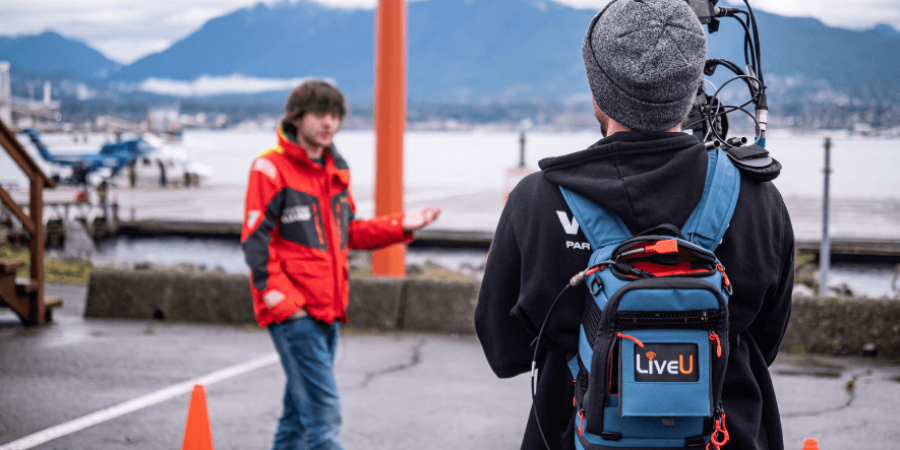
How It Works: Bonded Cellular Connectivity
The magic inside the LiveU IRL backpack is the way it handles data transmission. Here is a simplified breakdown of how the technology works step by step:
- Capture: A camera or video source captures the live scene. This camera is connected via HDMI or SDI cable to the LiveU backpack’s encoder device. For instance, a streamer’s mirrorless camera or a journalist’s professional camera feeds its video output directly into the LiveU unit.
- Encoding: The LiveU device immediately compresses the video feed using a high-efficiency codec (such as H.264 or H.265). This turns the raw video into a stream of data that can be sent over the internet. Despite the compression, the video retains broadcast-quality clarity suitable for viewers.
- Bonding and Transmission: Once encoded, the video data is split and distributed across multiple network connections simultaneously. The LiveU backpack contains several cellular modems (each connected to different mobile carriers or different frequency bands), and it can also utilize Wi-Fi or ethernet if available. The encoder divides the outgoing video packets among all these connections in parallel. For example, if the stream needs 6 Mbps of bandwidth, that load might be spread across say three 4G modems and a Wi-Fi link, rather than relying on just one pipeline. The bonded cellular technology continuously monitors each connection’s quality and speed. If one network link becomes weak (say one cellular signal drops or gets congested), the system automatically reallocates more data to the other links to compensate, all in real time.
- Cloud Receiver and Reassembly: On the receiving end – typically back at a studio control center or a cloud server provided by LiveU – the multiple data streams are reunified. The LiveU server software collects all the chunks of video sent over each network and reassembles them into the original full video stream. Because the system intelligently added some redundancy and kept track of packet ordering, it can smooth out any dropped packets from a flaky connection. LiveU’s LRT protocol plays a key role here, managing retransmissions and timing to ensure the video remains seamless despite traveling over varied networks.
- Broadcast/Streaming Output: The fully reassembled live video feed is then output to its final destination. Depending on the use case, this could be a television station’s live broadcast system or an online streaming platform. In a news scenario, for example, the feed might go into a TV station’s production switcher for live news broadcast. In a content creator’s case, the LiveU cloud service might forward the stream directly to the creator’s YouTube or Twitch account in real time. Viewers watching the live feed see a smooth, continuous video as if a professional broadcast truck were on-site, when in fact it’s coming from a single person with a backpack.
This entire process happens within seconds or fractions of a second, enabling truly live transmission. The bonded connectivity approach means that even if one or two connections have issues (which is common with mobile signals), the stream is not interrupted. The other connections pick up the slack, and the audience is none the wiser. In practical terms, a streamer using an IRL backpack can wander through a city, go indoors or outdoors, and even if one cellular carrier loses coverage momentarily, the stream stays up thanks to the remaining connections. This resiliency is what makes LiveU’s solution stand out compared to a single mobile phone stream – it dramatically reduces buffering, dropouts, and lost signals during a live broadcast.
Primary Users and Use Cases
LiveU’s IRL streaming backpack technology serves a diverse user base. Its primary customers and use cases include:
- Online Content Creators: Independent creators on platforms like Twitch, YouTube, and Facebook Live form a significant user group for LiveU’s portable units. These individuals stream “IRL” content such as travel vlogs, outdoor adventures, live interviews, and behind-the-scenes glimpses of events. They value LiveU backpacks because it gives them the freedom to broadcast in high quality while on the move, without worrying about finding Wi-Fi or losing their audience due to poor cell signal. For example, a travel vlogger can trek through remote areas or crowded city streets and still interact with viewers in real time, as the bonded system keeps the stream stable.
- Journalists and Broadcasters: LiveU’s original and largest customer base is TV news organizations and journalists. Reporters worldwide use LiveU backpacks to deliver live shots from the field – whether it’s covering a natural disaster, reporting from a war zone, or conducting interviews at a live event. News crews appreciate how quick and agile the setup is: they can be on-air within minutes of arriving on scene. The backpack can be carried through crowds or set up on a tripod at a moment’s notice, making it ideal for dynamic breaking news environments. Major broadcasters (from local stations to international news networks) have deployed fleets of LiveU units to their field teams to replace or supplement traditional satellite broadcasting. This not only cuts cost but also allows live coverage from places that would be impractical for a satellite truck to reach.
- Live Event Streamers and Producers: A broad range of live events – sports competitions, concerts, conferences, religious services, and community events – are streamed using LiveU technology. In sports, for instance, LiveU packs might be used to provide wireless camera angles from the sidelines or to connect a roaming reporter with the audience during a marathon or football match. Event production companies might use multiple LiveU units to cover different camera feeds around a venue, sending all angles back to a central production hub. Even smaller scale event organizers (a local concert or a church service) use IRL backpack setups to share their events live with online audiences. The common thread is the need to stream high-quality video from on-site without relying on venue internet (which might be unavailable or unreliable). LiveU offers the confidence that the broadcast will go on, even if tens of thousands of people are in the venue competing for cellular bandwidth.
Beyond these core groups, LiveU backpacks have also found use in public safety and government applications. First responders and law enforcement agencies use them to get real-time video from the field to command centers during emergencies, and government communications teams use them to stream press conferences or important events. Educational institutions have also started to use live streaming for remote learning and campus events. In all cases, the draw is the same: a portable, dependable way to transmit live video without heavy infrastructure.
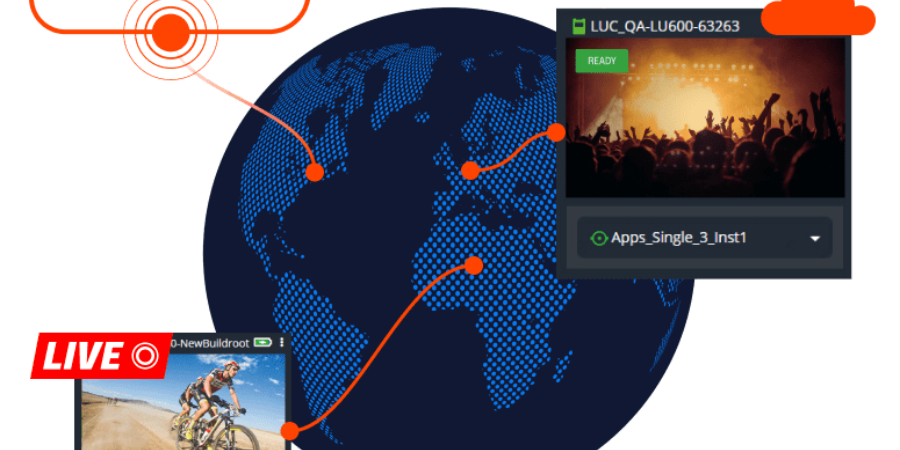
What Sets LiveU Apart from Competing Products
LiveU is not the only solution for mobile live streaming, but several factors distinguish its IRL backpack technology from competing products:
- Proven Reliability: LiveU’s bonded multi-network approach offers a level of reliability that single-connection devices (or basic smartphone streaming) can’t match. By aggregating multiple cellular signals, a LiveU stream can stay online in conditions that would cause others to buffer or drop. This reliability has been proven in critical situations worldwide, from live news broadcasts in remote regions to streams in the middle of large crowds. When one connection falters, the viewer experience remains uninterrupted – a hallmark of LiveU’s technology.
- Broadcast-Quality Video: LiveU devices deliver professional-grade video quality (up to HD and 4K, with high-bitrate encoding and proper audio support). Competing consumer-oriented streaming gadgets might sacrifice quality for simplicity, but LiveU manages to offer both ease-of-use and top-tier quality. This makes its solutions suitable not just for casual streams but also for broadcast television and other applications where picture quality is paramount. The use of advanced codecs (like HEVC) and high-end hardware encoders means the video from a LiveU pack can look as crisp and smooth as a traditional broadcast.
- Portability and Convenience: The entire LiveU setup is designed to be mobile and user-friendly. The backpack form factor, hot-swappable batteries, and relatively lightweight units mean that a single person can carry and operate the system without needing a technical crew. LiveU has refined its user interfaces and hardware over generations of products to make operation as simple as pressing a single button to “go live”. Furthermore, their Solo line is tailored for non-technical users, offering a web-based portal for configuration and a straightforward setup process. While there are other bonding solutions on the market, many are either DIY and cumbersome or built for vehicles. LiveU’s all-in-one backpack approach remains one of the most streamlined options.
- Complete Ecosystem and Support: LiveU isn’t just selling a gadget – it provides an end-to-end ecosystem. This includes the field unit, cloud services to receive and distribute streams, and management software to control multiple units. For professional clients, this ecosystem advantage is huge: they can manage dozens of live feeds, switch between them, record them in the cloud, and distribute content to multiple platforms all through LiveU’s system. Additionally, LiveU offers 24/7 customer support to its users (especially broadcasters who may need immediate assistance during a live event). This level of service and integrated platform sets LiveU apart from many competitors who might offer a device without the same backend infrastructure. It means customers have a one-stop solution and dependable help when needed.
- Industry Experience and Trust: Having been a pioneer in this field, LiveU has well over a decade of experience and feedback from users shaping its products. The company has worked closely with top broadcasters, which has led to a mature and robust product line. When comparing options, many organizations choose LiveU because it has a track record – it’s been tested in the most demanding scenarios (news wars, international sports events, etc.). In contrast, newer or smaller competitors might not have gone through that trial by fire. LiveU’s brand has become synonymous with live cellular broadcasting; in fact, in many newsrooms “LiveU” is sometimes used as shorthand for any bonded cellular pack (a testament to how defining their product has been). This trust factor is a key differentiator when live content absolutely cannot fail.
In summary, LiveU’s IRL streaming backpack solution stands out by delivering reliable, high-quality live video in a user-friendly portable package, backed by a comprehensive ecosystem and years of expertise. Whether for a lone streamer sharing a personal adventure or a major network broadcasting breaking news, LiveU provides the confidence and capability to go live from anywhere. The company’s blend of innovative technology and practical understanding of live production needs has made it a leader in this space.
Conclusion – LiveU Backpack:
LiveU’s journey from a startup with an idea to replace satellite trucks, into a global standard for IRL streaming, highlights the growing demand for mobile live content in our world. By continually pushing the boundaries of what’s possible – from bonding multiple cell signals to leveraging 5G and cloud workflows – LiveU has empowered storytellers of all kinds to connect with audiences instantly and authentically. The IRL streaming backpack is the embodiment of LiveU’s mission: a tool that brings the power of live broadcast to anyone, anywhere. As live streaming becomes ever more central to news, entertainment, and social media, LiveU remains at the forefront, enabling us to witness events as they happen, no matter where they unfold.

